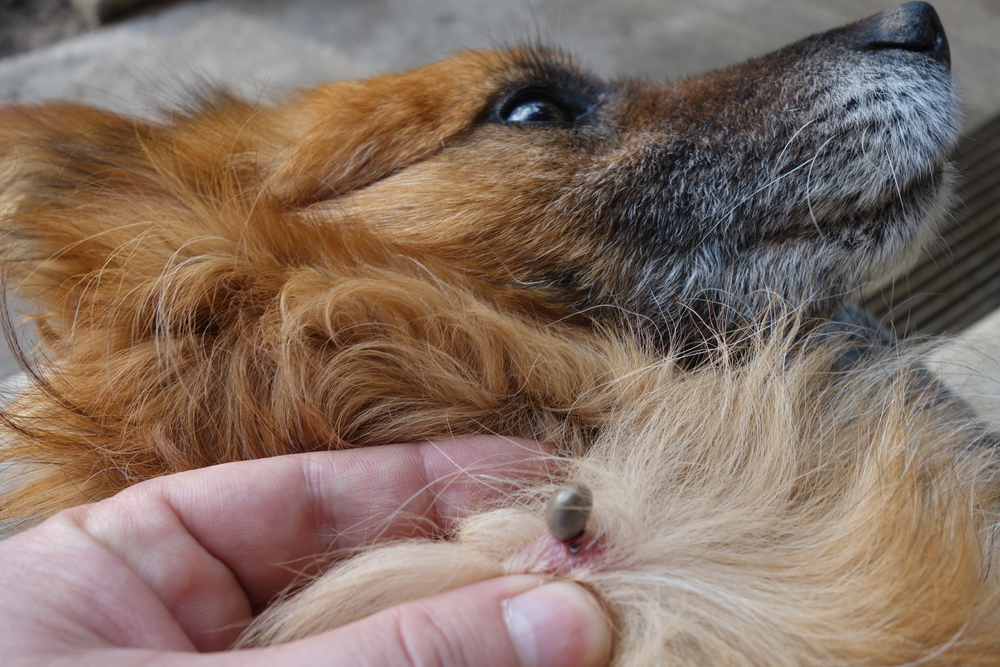Certain tick species can transmit Lyme disease to pets and people. The illness can be severely debilitating, and the infection isn’t always easy to clear. Our Star of Texas Veterinary Hospital team wants to protect you and your pet, and we provide information about Lyme disease and tips to prevent infection.
Understanding Lyme disease in pets
Lyme disease is caused by a worm-like, spiral shaped bacterium called Borrelia burgdorferi. The disease is named after Lyme, Connecticut, where the organism was identified in 1975. Since then, the disease has been reported in humans and animals around the world. In the United States, Lyme disease is found primarily in the Northeast, upper Midwest, and Pacific Coast states, but the geographical range continues to expand westward and southward. Other information about Lyme disease includes:
- Transmission — Lyme disease is transmitted through the bite of an infected black-legged or deer tick. White-tailed deer populations provide an ample supply of hosts for these parasites. In most cases, the tick must remain attached for 36 to 48 hours for transmission to occur.
- Signs — Signs typically don’t appear until two to five months after infection. Signs include lethargy, fever, decreased appetite, shifting limb lameness, joint swelling, and swollen lymph nodes.
- Complications — In rare cases, severe complications, such as kidney inflammation, heart inflammation, and neurologic issues, occur.
Diagnosing Lyme disease in pets
If your pet is showing signs that may indicate Lyme disease, potential diagnostics include:
- Complete blood count (CBC) and biochemistry — Our team may recommend a CBC and biochemistry profile to assess your pet’s overall health and rule out other conditions that may cause similar signs.
- Qualitative assay — Serologic assays are available that detect host antibodies to specific B. burgdorferi antigens. These tests provide a yes or no answer.
- Quantitative assay — An assay is also available that detects specific proteins on the bacterium’s surface at three different stages of the pathogen’s life cycle. This test can indicate if a pet has been recently infected or is chronically infected and also can distinguish between infection and vaccination.
Treating Lyme disease in pets
Lyme disease typically responds to a certain antibiotic class, but treatment can take several weeks or months. In some cases, signs recur when treatment stops and more intense treatment is necessary. Supportive care is necessary when serious complications occur, and some pets develop permanent issues such as arthritis.
Understanding the connection between Lyme disease in pets and people
If your pet has Lyme disease, they can’t pass the infection to you. However, since you spend time in the same environment as your pet, you likely have been exposed to disease-transmitting ticks, and you should consult your primary care physician to determine your risk. Most people bitten by a Lyme-infected tick develop a rash and flu-like symptoms.
Preventing Lyme disease in pets

You can take steps to reduce your pet’s risk of Lyme disease such as:
- Providing year-round tick prevention — Ticks are hardy creatures and can survive in cold temperatures, making year-round protection necessary. Administer tick prevention medication once a month all year long to protect your pet.
- Checking your pet for ticks — Check your pet daily, especially after going on outings, for ticks. Common hiding spots for ticks include in your pet’s ears, between their toes, under their tail, in their groin and armpit areas, and under their collar.
- Removing ticks appropriately — Removing ticks within 24 hours significantly reduces your pet’s chances of being infected by Lyme disease. If you find a tick on your pet, steps to remove safely the parasite include:
- Using clean, fine-tipped tweezers to grasp the tick as close to the skin surface as possible.
- Pulling upward using steady, even pressure. Don’t twist or jerk the tick to prevent leaving their mouth parts in your pet’s skin.
- Cleaning the bite area with rubbing alcohol.
- Placing the tick in alcohol so you can identify the species.
- Monitoring the site for infection, and monitoring your pet for signs of illness.
- Caring for your yard — Mow your lawn regularly and pull tall weeds to make your yard less attractive to ticks. Also secure outdoor trash cans to discourage wild animals that carry deer ticks.
- Protecting yourself — Take steps to prevent ticks from hitching a ride on your clothing. Avoid areas where ticks are found, use insecticide, and check yourself for ticks after being outside.
- Getting vaccinated — A Lyme vaccine is available for dogs. Talk to our veterinary team to see if your dog is a good candidate.
Texas isn’t an endemic area for Lyme disease, but ticks that carry the bacteria continue to spread across the country, putting pets in every state at risk. While Lyme disease is a concerning issue, being educated about the infection can help protect you and your pet. If you would like to discuss vaccinating your dog for Lyme disease, contact our Fear Free team at Star of Texas Veterinary Hospital so we can evaluate their circumstances and determine if your pet is a good candidate.






